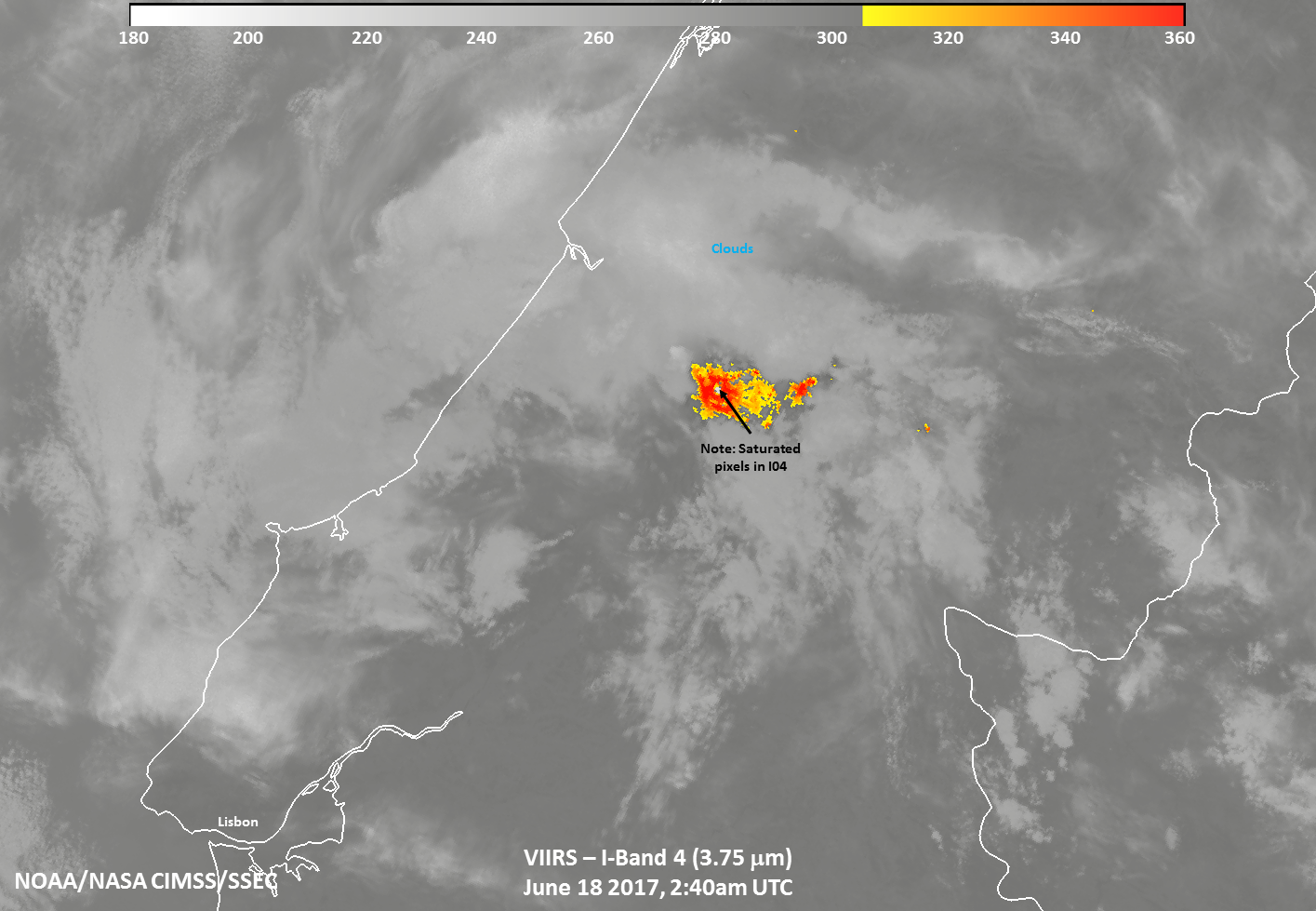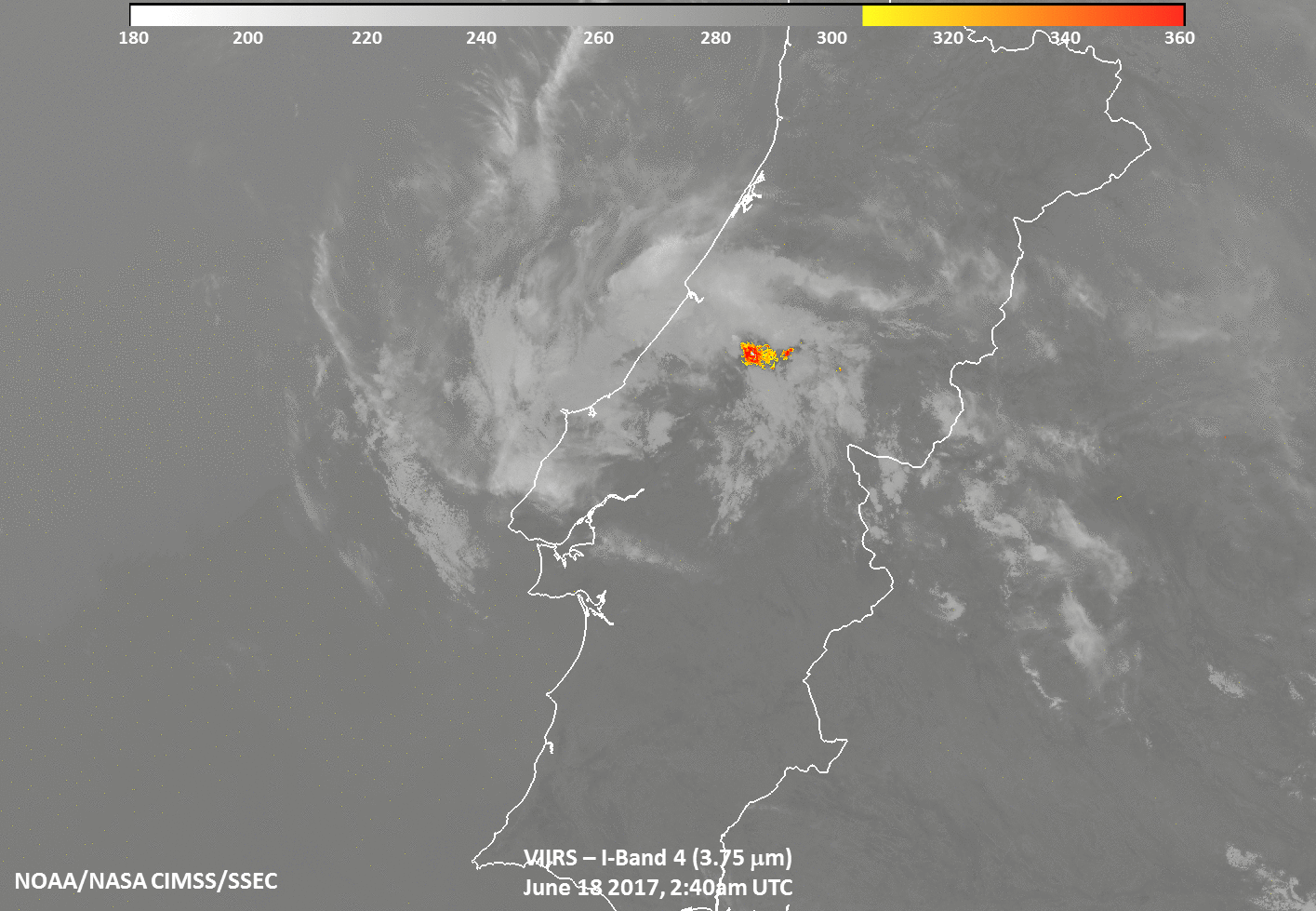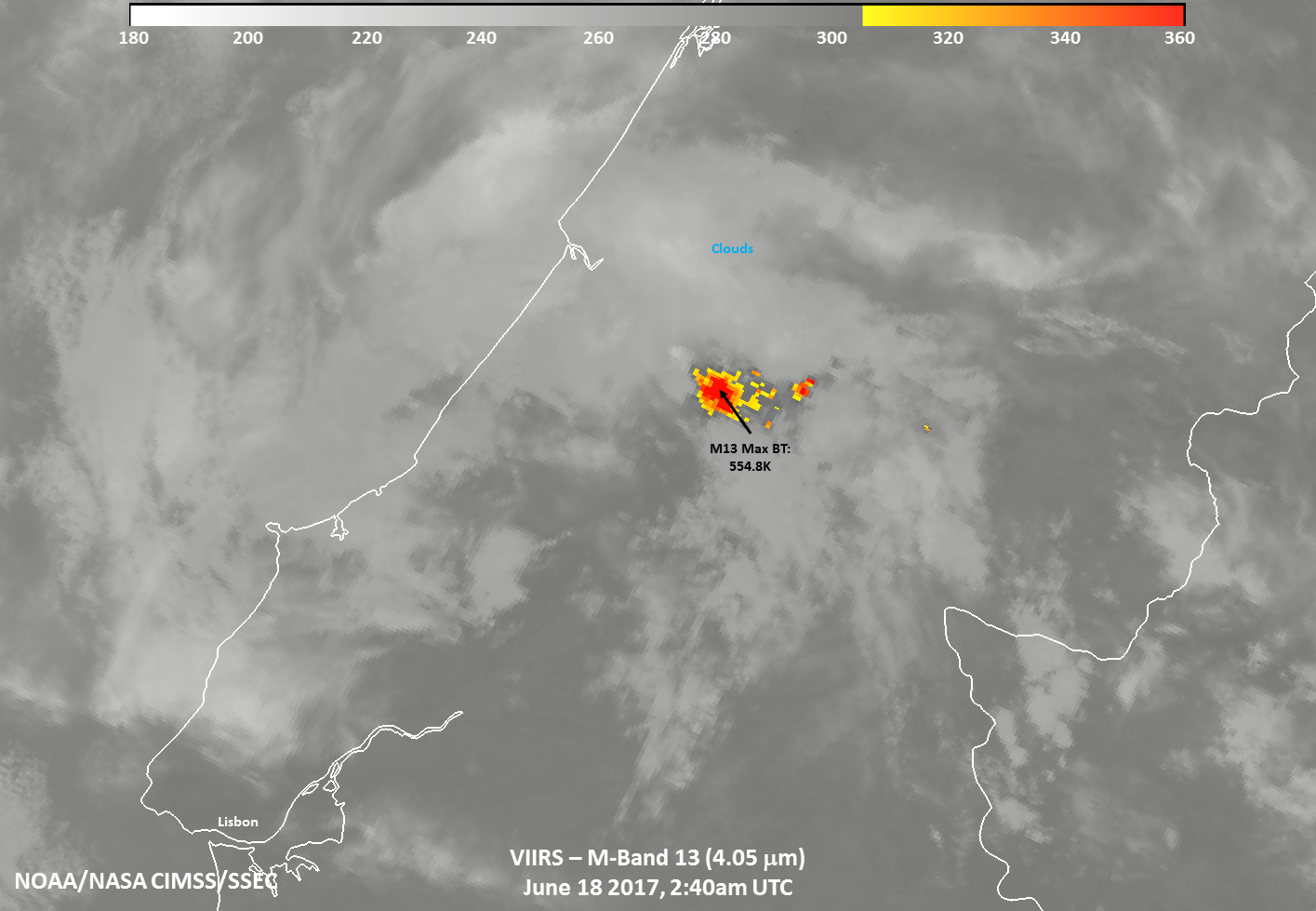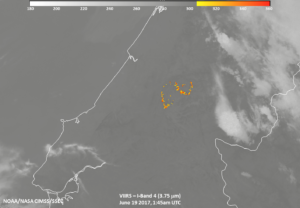Deadly Fire in Portugal

Suomi NPP VIIRS Day/Night Band Visible Imagery (0.70 µm) at 0240 UTC on 18 June 2017 (Click to enlarge)
(Images in this blog post were created by William Straka, SSEC. Thanks William!!)
Parts of Pedrogao Grande in central Portugal (northeast of Lisbon) burned over the weekend in a massive forest fire. At least 62 people were killed (News Link; Youtube Video 1, 2). Suomi NPP overflew the region shortly after the fire started, and annotated VIIRS (Visible Infrared Imaging Radiometer Suite) Day/Night Band imagery is shown above (Click here for an image without annotation). The size of the bright light signature from the fire (overlain with thin clouds) rivals that of Lisbon.

Suomi NPP VIIRS Shortwave Infrared imagery ( 3.75 µm) at 0240 UTC on 18 June 2017 (Click to enlarge)
Shortwave Infrared channels on Suomi NPP also testify to the intensity of the fire. The 3.75 µm above (Click here for an image with no labels) shows a saturated pixel (exceeding 367 K) over the hottest part of the fire. The 1.61 µm channel in the near infrared also had a strong signal. The 4.05 µm imagery (Click here for an image without annotation) shown below had a maximum brightness temperature exceeding 550 K! (This channel was specifically designed for fire detection).

Meteosat-10 Severi Infrared Imagery (3.9 µm) from 0000 to 0400 UTC on 18 June 2017 (click to enlarge)
The SEVERI Instrument on Meteosat-10 also detected this fire, and because Meteosat is geostationary, it provided better temporal coverage vs. the single snapshot from Suomi NPP. The animation above shows considerable cloud cover over Portugal, but very warm pixels are present starting after 0145 UTC. The toggle below compares 3.9 µm SEVIRI at 0245 UTC with 3.75 µm Suomi NPP VIIRS at 0240 UTC. The better spatial resolution of the VIIRS instrument is apparent, as are much warmer temperatures as expected given the smaller pixel size on VIIRS. Note also a slight parallax shift.

Shortwave Infrared Imagery (3.9 µm from Meteosat-10 SEVIRI at 0245 UTC and 3.75 µm from Suomi NPP VIIRS at 0240 UTC) over Portugal (Click to enlarge)
=================== ADDED =======================

Suomi NPP VIIRS Day/Night Band visible (0.70 µm) imagery at 0145 UTC on 19 June 2017 (Click to enlarge)
Data from the 0145 UTC 19 June overpass on Suomi NPP show that the fire continues, although with less intensity. The Day/Night Band (above) and the 3.75 µm Shortwave Infrared (below) show the fire locations.



